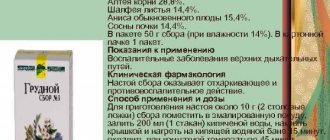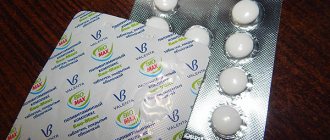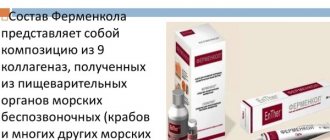Corvalol drops: composition
The drug contains mint oil, ethyl bromizovalerianate and phenobarbital.
Peppermint is known for its ability to have a calming effect on the nervous system. In addition, mint helps blood vessels dilate.
Phenobarbital is a special component that enhances the effect of other substances that make up Corvalol. In particular, it contributes to the rapid manifestation of a sedative effect on the central nervous system and the body as a whole. Thanks to phenobarbital, Corvalol makes it easier for a person to go to sleep, which is especially important after suffering stress.
Ethyl bromizovalerate is responsible for the antispasmodic effect accompanied by a strong sedative effect.
Drops contain alcohol as an auxiliary component.
Adverse reactions
Corvalol in tablets and drops can cause negative effects:
- dizziness;
- excessive sleepiness;
- loss of performance;
- rash, itching;
- gastrointestinal disorder;
- labored breathing.
With prolonged use of the drug, there is a possibility of accumulation of bromine in the body, disruption of osteogenesis, development of symptoms of bromism, such as rhinitis, acne, conjunctivitis, lacrimation, stress, depression of the central nervous system.
Negative consequences, as a rule, disappear without a trace after reducing the dose or completely stopping the drug.
How many drops of Corvalol to take?
Most often you can find Corvalol in drops. It is sold in glass vials equipped with a dropper. Therefore, the question most often arises of how many drops you need to drink in each specific case. There is an opinion that it is correct to take into account the following calculation: 1 drop per 1 year of life. However, medicine says that this is wrong.
A single dose should not exceed 30 drops. Corvalol concentrate must be dissolved in a sufficient amount of water. The more liquid you take for dilution, the less pronounced the taste of the medicinal solution will be. In special cases, the single dose can be increased to 50 drops.
You can repeat the reception up to three times a day. It is important that the daily dose does not exceed 100 drops.
It is not recommended to take Corvalol as a course without consulting a doctor. Unlike long-term use, a one-time use during stress does not pose a danger to humans, however, constant use of the drug can also have a negative effect on the body.
Drug during pregnancy
The instructions indicate that Corvalol tablets and drops are contraindicated for use while pregnant.
The use of the drug in the 1st trimester of pregnancy can negatively affect the development of the fetus, and in the 3rd semester it can provoke a disorder of the respiratory system of the newborn.
If there is an urgent need to take the drug during pregnancy, Corvalol can be used in minimal quantities. However, if possible, it is advisable to stop taking the drug.
Overdose
Due to the fact that the drug contains bromine compounds, an overdose can provoke:
- depression;
- rhinitis;
- inflammation of the conjunctiva;
- lack of coordination;
- drug dependence.
With prolonged use, patients note the appearance of dizziness, increased drowsiness, and the appearance of allergic reactions.
With liver failure, a rash may appear, accompanied by severe itching. Each meal will make the rash worse, even if Corvalol is stopped. Patients with phenobarbital poisoning note the appearance of edema, which indicates an exacerbation of renal failure. If such a reaction occurs, the patient should urgently call a doctor and, if necessary, be hospitalized.
When to use
The drug cannot treat any serious diseases. It is usually taken for dysfunction without serious pathologies (functional impairment). Corvalol is taken to reduce the excitability of the nervous system and as a drug with some vasodilating effect. It can help with increased irritability, agitation with difficulty falling asleep and body reactions such as sweating, redness, weakness (manifestations of autonomic reactions of the nervous system). Sometimes to relieve intestinal spasms.
The main purpose of taking Corvalol is to reduce the excitability of the nervous system and slightly dilate blood vessels.
The General Secretary of the Russian Scientific Medical Society of Therapists, Andrei Spassky, believes that the drug is beneficial. It helps with heart disease, rhythm disturbances, and cardioneurosis. There are about 17 million people suffering from coronary heart disease in Russia. Approximately every second person uses such drugs, because they have a fairly good antiarrhythmic effect.
Special reactions to the components of the drug
The following negative reactions were observed in patients taking Corvalol:
- nausea;
- vomit;
- constipation;
- feeling of heaviness in the stomach;
- increased weakness;
- dizziness;
- hallucinations;
- headaches in the frontal lobe;
- anemia;
- thrombocytopenia;
- difficulty breathing.
Is there a lethal dose?
The active substances of Corvalol are of plant origin, therefore they are safe, however, the use of high doses of the drug is accompanied by the risk of complications.
It is believed that the lethal dose of the drug is 120-150 drops in one dose (240 tablets, respectively). The maximum permissible concentration of the drug differs in each individual case, depending on age, the state of the enzyme systems of the liver and kidneys (for alcoholics, the toxic dose is higher, up to 200 drops).
Death occurs due to cardiac and respiratory arrest. Intensive therapy requires the administration of detoxification drugs and cardiotonic agents.
Is it possible to use Corvalol for VSD?
Vegetative-vascular dystonia is not a diagnosis, but this condition well characterizes the well-being of many people. It is accompanied by fatigue, dizziness that occurs with a sudden change in body position, including darkening of the eyes. Dystonia is a condition of blood vessels in which they do not have time to respond to a change from a horizontal to a vertical body position, and also cannot expand in a timely manner to allow more blood to pass through during sports activities.
In this case, the effect of Corvalol is explained by several factors:
- mint makes blood vessels more elastic;
- bromine reduces anxiety, which increases the symptoms of VSD;
- phenobarbital enhances the effect of the other two components, improving sleep.
Modern Pharmaceuticals of Russia
Corvalol, tablets
Trade name: Corvalol International nonproprietary or generic name:
Peppermint leaves oil + Phenobarbital + Ethyl bromizovalerianate.
Dosage form:
tablets
Description:
Tablets of white or almost white color with inclusions, round in shape with a flat surface, beveled to the edge with chamfers.
ATC code:
N05CM
Pharmacotherapeutic group:
Sedative.
Pharmacological action:
The combined drug has a sedative and antispasmodic effect, facilitates the onset of natural sleep.
Ethyl bromizovalerianate (ethyl ester of alpha-bromoisovaleric acid) has a sedative (similar to the effect of valerian) and antispasmodic effect due to irritation, mainly of receptors in the oral cavity and nasopharynx, a decrease in reflex excitability in the central parts of the nervous system and increased inhibition in the neurons of the cortex and subcortical structures of the brain, as well as a decrease in the activity of central vasomotor centers and a direct local antispasmodic effect on smooth muscles.
Phenobarbital has a sedative (in small doses), hypnotic, muscle relaxant and antispasmodic effects, helps reduce excitation of the central nervous system (CNS) and facilitates the onset of sleep, and enhances the sedative effect of other components.
Peppermint leaf oil has a reflex vasodilating, antispasmodic, mild choleretic, antiseptic effect.
The mechanism of action is associated with the ability to irritate “cold” receptors of the oral mucosa and reflexively dilate mainly the vessels of the heart and brain. Eliminates flatulence by irritating receptors in the mucous membrane of the gastrointestinal tract (GIT), enhancing intestinal motility. Pharmacokinetics
Data on the pharmacokinetics of ethyl bromoisovalerate and the components of peppermint are not available.
When taken orally, phenobarbital is absorbed slowly and completely. The maximum concentration in the blood plasma is determined after 1-2 hours, the connection with plasma proteins is 50%, in newborns - 30-40%. Metabolized in the liver, induces microsomal liver enzymes with isoenzymes CYP3A4, CYP3A5, CYP3A7 (the rate of enzymatic reactions increases 10-12 times). Cumulates in the body. The half-life is 2-4 days. It is excreted by the kidneys in the form of glucuronide, about 25% unchanged. Penetrates into breast milk and through the placental barrier. Indications for use:
Corvalol is prescribed as a symptomatic (sedative and vasodilator) agent for functional disorders of the cardiovascular system, for neurosis-like conditions accompanied by increased irritability, difficulty falling asleep, tachycardia, a state of agitation with pronounced vegetative manifestations;
as an antispasmodic - for intestinal spasms. Contraindications:
- hypersensitivity to the components of the drug;
- severe renal and/or liver dysfunction;
- pregnancy;
- breastfeeding period;
- children under 18 years of age (efficacy and safety have not been established);
- lactase deficiency, lactose intolerance, glucose-galactose malabsorption (the drug contains lactose).
With caution:
Impaired renal and/or liver function.
If you have one of the listed diseases/conditions, be sure to consult your doctor before taking the drug.
Use during pregnancy and breastfeeding:
The use of Corvalol during pregnancy and breastfeeding is contraindicated, since the drug contains phenobarbital, which penetrates the placenta and has a teratogenic effect, has a negative effect on the formation and further functioning of the central nervous system of the fetus and newborn ;
penetrates into breast milk, the development of physical dependence in the newborn is possible. If it is necessary to use the drug during breastfeeding, the issue of stopping breastfeeding with breast milk should be decided. Directions for use and dosage:
For oral administration, before meals, with water.
Adults are usually prescribed 1-2 tablets of the drug 2 times a day.
For tachycardia, it is possible to increase the single dose to 3 tablets.
The maximum daily dose is 6 tablets.
The dosage and duration of treatment is determined by the doctor individually for each patient.
Side effects:
Corvalol is generally well tolerated. In some cases, drowsiness, slight dizziness, slow heart rate, decreased ability to concentrate, and an allergic reaction may occur. Gastrointestinal disturbances may occur. These phenomena disappear when the dose of the drug is reduced or the drug is stopped.
With prolonged use of the drug, the formation of drug dependence, addiction, “withdrawal” syndrome, as well as the accumulation of bromine in the body and the development of bromism phenomena (depressive mood, apathy, rhinitis, conjunctivitis, hemorrhagic diathesis, impaired coordination of movements) is possible.
If any of the side effects indicated in the instructions get worse, or you notice any other side effects not listed in the instructions, tell your doctor.
Overdose
Symptoms: depression of the central nervous system, nystagmus, ataxia, decreased blood pressure, agitation, dizziness, weakness, chronic bromine intoxication (depression, apathy, rhinitis, conjunctivitis, hemorrhagic diathesis, impaired coordination of movements).
Treatment: discontinuation of the drug, gastric lavage and symptomatic therapy; in case of central nervous system depression - caffeine, niketamide.
Interaction with other drugs:
Drugs that depress the central nervous system enhance the effect of the drug.
Phenobarbital (an inducer of microsomal oxidation) may reduce the effectiveness of drugs metabolized in the liver (including coumarin derivatives, griseofulvin, glucocorticosteroids, oral contraceptives); enhances the effect of local anesthetic, analgesic and hypnotic drugs.
The drug increases the toxicity of methotrexate.
The effect of the drug is enhanced by the use of valproic acid drugs.
Special instructions:
There is no experience in using the drug in children under 18 years of age.
The effect of the drug is enhanced by the use of valproic acid drugs.
Effect on the ability to drive vehicles and machinery:
The drug contains phenobarbital, therefore patients taking Corvalol should refrain from driving vehicles and engaging in other potentially hazardous activities that require increased concentration and speed of psychomotor reactions.
Release form:
Tablets.
10, 20 or 25 tablets in a blister pack (blister) made of polyvinyl chloride film and printed varnished aluminum foil.
1, 2, 3, 4, 5 or 10 blisters along with instructions for medical use are placed in a cardboard pack.
30, 50, 100 blisters, along with an equal number of instructions for medical use, are placed in a cardboard box (for hospitals).
Storage conditions:
In a place protected from light, at a temperature not exceeding 25 ºС.
Keep out of the reach of children. Shelf life:
2 years.
Do not use the drug after the expiration date indicated on the package.
Dispensing conditions:
Without a prescription.
How to take Corvalol for herpes
The effectiveness of Corvalol against the herpes virus, which manifests itself on the lips in the form of ulcers, has been noted. It is important to use Corvalol at the first sign of a painful sore on the lips. In order to prevent the disease from developing, it is necessary to wet a piece of cotton wool or one end of a cotton swab with Corvalol and apply it to the ulcer. A tingling sensation will indicate that the drug has begun to destroy the ulcer. Alcohol, having a drying effect, will speed up recovery. You need to repeat the procedure several times a day until the tingling stops.
Is the medication harmful and how long can you take it?
Corvalol is a drug that belongs to the category of over-the-counter pharmaceuticals due to its relative safety, however, dosage and method of administration determine possible undesirable effects.
The active metabolites of the drug have insufficient concentrations to cause toxic effects when taken in standard courses. Longer use is accompanied by the accumulation of metabolic products in tissues and the appearance of signs of chronic overdose.
Withdrawal from the drug is carried out gradually due to the possible development of withdrawal syndrome (high blood pressure, tachycardia, facial flushing, irritability).
Main contraindications to taking Corvalol:
- hypersensitivity to the components of the drug (most often to bromine);
- pregnancy: in the first 16 weeks the drug is absolutely contraindicated, in the third trimester - in the absence of other drugs, single use is allowed;
- lactation period: phenobarbital passes through breast milk to the baby during feeding, which has a depressing effect on the formation of the nervous system;
- heart failure with signs of blood stagnation;
- renal and/or liver failure.
Most often, the drug is prescribed to adults; clinical studies of effectiveness in children have not been conducted.
Use of Corvalol in newborns and infants
Despite the relative safety of the drug, Corvalol is prescribed to newborns quite rarely and with great caution. Parents sometimes give medicine for the baby's restlessness, poor sleep, and frequent painful colic. Also used for elevated body temperature (for example, after vaccination), and for intestinal spasms.
It must be remembered that Corvalol is used for children only in drops. This form of release of the drug contains ethyl alcohol, so frequent uncontrolled use in an infant is very dangerous for health: allergies, intoxication, and drug dependence may occur.
Pediatricians do not recommend taking Corvalol to children under 12 years of age, but in some cases it is prescribed from 3 years of age. For young children, there are other, safer drugs that can cope with the problem of anxiety, spasm, and hyperthermia.
conclusions
Corvalol is quite safe, has no side effects when the dose is correctly selected. It is used in the complex treatment of problems of the nervous and cardiovascular systems, and also as a symptomatic remedy for insomnia and pain.
The drug is used not only in adults, but also in adolescents and young children. Indications for use, duration of therapy and dose of Corvalol for children are determined by a pediatrician or cardiologist. If side effects or symptoms of overdose or allergic reactions occur, you should immediately stop taking the drug and seek medical help.










